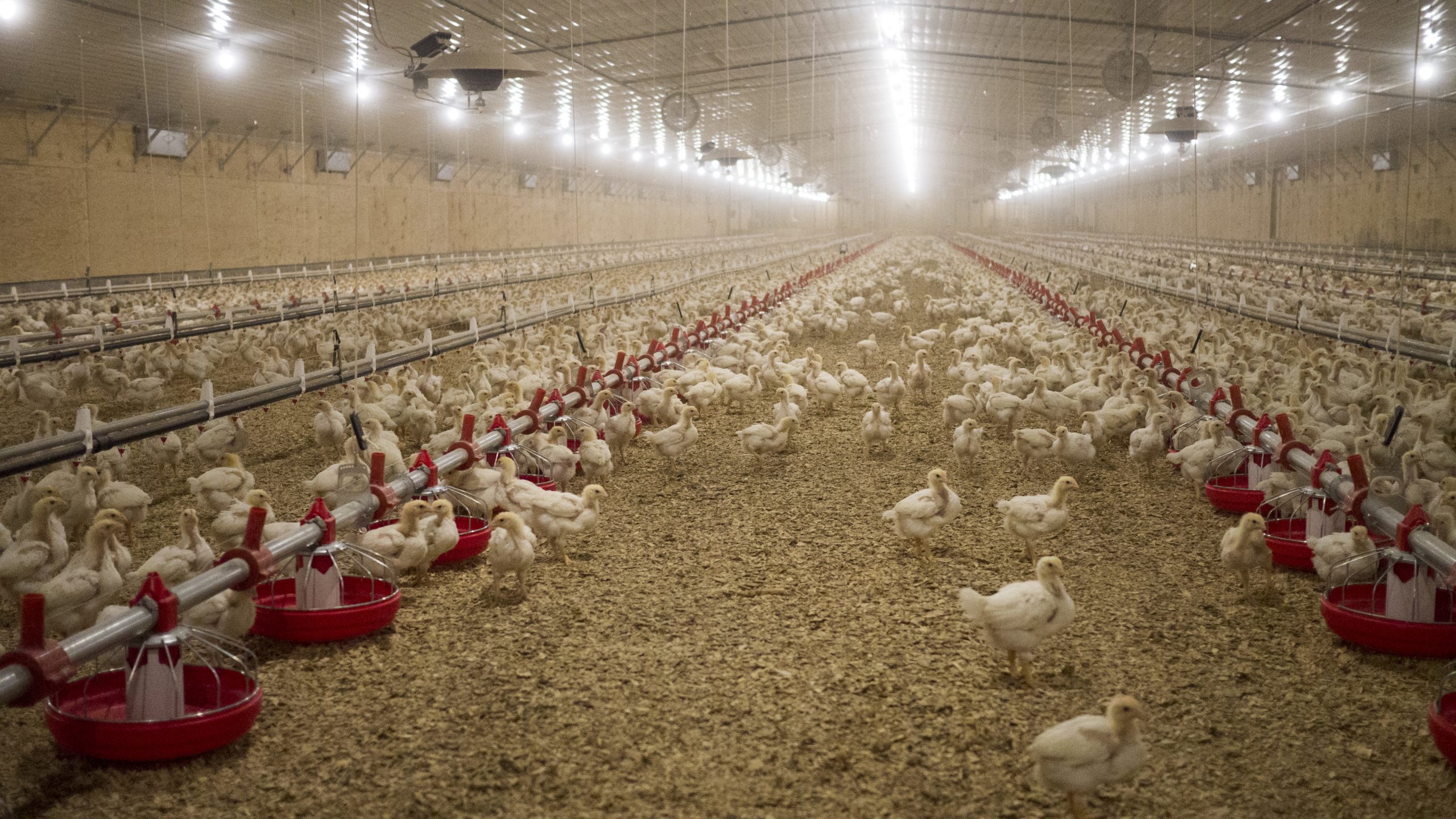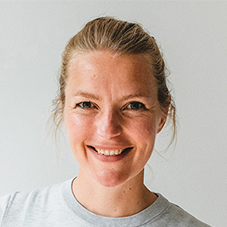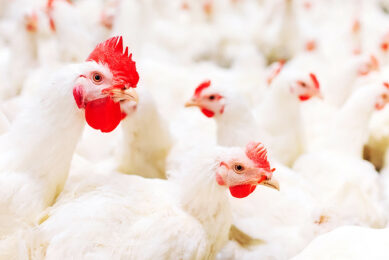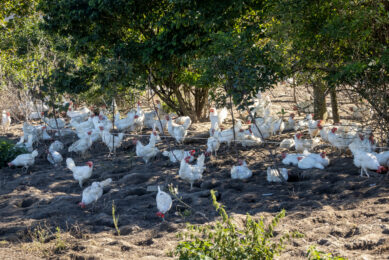“No antibiotics ever at Perdue Farms in the US”

You better get used to it, because you will hear the term NAE, or ‘No Antibiotics Ever’ more often in the future. Perdue Foods, one of the biggest poultry producers in the US has been producing NAE birds for many years and started placing 100% of the birds as NAE in 2017.
Antibiotic reduction is a hot topic in pretty much all the regions in the world. Europe set the stage, more than a decade ago with the banning of AGP’s in animal feed. The US and Asia are also following suit by curbing therapeutic and preventive use of antibiotics in farm animals. As a result, more of the meat hitting supermarket shelves are starting to advertise as being antibiotic free, or raised without antibiotics. And here is where the confusion starts with the general public.
All meat that ends up in the supermarket is in fact ‘antibiotic-free’, as all farmers have to comply with the compulsory withdrawal periods (certain amount of days) after animals are treated with antibiotics, to make sure no traces or residues of the drug are left behind. So in theory, the term ‘antibiotic-free’ doesn’t say a lot. We should talk about ‘antibiotic-free production’, or even better, ‘no antibiotics ever’. This means that all animals, from hatchery or birth, till slaughter are not treated with any antibiotics, also referred to as NAE (no antibiotics ever). This term is really taking off in the United States, explained by Mike Leventini from Perdue Foods, a family-owned company, based in Salisbury, Maryland, US. His company has achieved that all of their branded meat is 100% NAE as of 2017. Mr Leventini, as the manager of live production activities at Perdue Foods, has been part of this process. The company has 2 operating divisions, Perdue Foods and Perdue AgriBusiness. The Perdue brand is the number-one brand of fresh chicken in the US, and Perdue AgriBusiness is an international agricultural products and services company. Perdue Foods is processing 13 million birds per week in its 11 plants across the US. The birds are supplied from over 2,100 contract growers (farms) around the US. “We also produce around 800,000 organic chickens per year and we also have a beef and pork division. The organic part has been added to the company with the takeover of the organic farming business of Coleman in 2011,” explains Mr Leventini.
What does the term NAE include?
Mr Leventini explains that in the US, antibiotics are used in several ways in poultry production.
- For starters, antibiotics can be applied for growth promotion (continuous prevention), in countries where this is still allowed.
- Secondly, antibiotics can be applied in the hatchery.
- Thirdly, the farmer can decide to use antibiotics in all the production phases, but only use animal class of antibiotics (so no critically important antibiotics for human medicine).
- And lastly, farms can decide to use antibiotics only for treatment of sick or soon to be sick (birds in the house with sick birds).
“We do not apply any of this in our operations, although we do treat as needed, but we don’t use those animals in our brands. The term NAE includes: Removing all human and animal antibiotics from the feed and hatchery, eliminating the use of antibiotics for growth promotion and most importantly, raising animals in a way that does not require antibiotics for disease prevention. This means we are at the same level as organic farms when it comes to antibiotic use. Farms that claim to be antibiotic free are not necessary farms that fall into the NAE category. These farms for example may still use antibiotics in the hatchery. The problem is that everybody’s rules tend to be a little bit different in different parts of the world. Ionopores for example can be called antibiotics or anticoccidials. You can imagine that consumers are not aware of these technical terms,” says Mr Leventini.

Getting the terminology rightAn important prerequisite for having stickers/labels on meat packages is that claims should not be misleading for the consumer. In the US for example, the claims Natural and Antibiotic free / No antibiotic residues are not registered claims. Antibiotic free can be misleading and just a marketing trick, as all meat in the supermarket are free of traces or residues as farmers simply have to comply with the withdrawal period / waiting time when an antibiotic is used. Next to Perdue, also Giant Food in the US has the label NAE (for their pork). In the EU, meat can have relevant information or a label on the package about a certain certification programme or type of housing. For example. in 2017, the Netherlands introduced a ‘no antibiotic ever’ claim on pork. These products are sold in a selection of Dutch supermarkets. Germany has for example Value-Schwein, meat raised from pigs that never received antibiotics. |
Going to zero takes time and prep work
“In 2002 it became clear to Perdue that consumer concerns regarding the way food is produced are growing and we had to react or be prepared for what was coming. At this stage we decided we wanted to move away from antibiotics. We did it safely but slowly. Moving towards an NAE system is not something you do overnight. We didn’t have a clear time frame in mind. We simply started our journey,” says Mr Leventini. “It took us several years to go to zero antibiotics in all of our farms. At the time we started this route we also didn’t have a particular time-frame in mind when it should all have been finished,” explains Mr Leventini. Perdue Foods has done a lot of preparation work to come to the point of being 100% NAE. Measures included: Preheating of the barn, so the young chicks are not placed on cold litter. Extra attention was paid on the breeders and sanitation and cleaning of the eggs. Furthermore, improved vaccination programmes were implemented to step up the bird’s immune system even more, the birds got more space and the down time between flocks was increased. In the hatcheries, the company improved the hatchery sanitations and processes. Mr Leventini: “We also spend a lot of time with our farmers to hear what they need so we can supply them the knowledge and technology they need to make the transition to NAE. Fewer birds, more space. In addition, the farmers are rewarded if the birds perform better, measured by a ranking system based on several zootechnical parameters such as FCR and liveability.” Because the US has highly dense poultry areas and areas with less poultry farms, the transition was different per region of the country. “When more farms are close to each other (such as in the ‘poultry state’ Delaware), the disease pressure is higher. On average the antibiotic use is also higher on these farms. It simple means that more work had to be done in these regions.

NAE is growing in strength
For all of the farms, Perdue systematically addressed the weaknesses of their live operations that cause stress to our birds, because stress often means that antibiotics are used to counteract the effects or to prevent diseases. “It is very important to know what is causing a certain level of antibiotic use. If you reduce the stressful periods for the animals, big steps can be made. We are also constantly trying to improve the system. For example, we are experimenting with mini pellets instead of crumble for the chickens. We are also trying different probiotics and prebiotics and have removed animal by-products in the feed. Perdue is also looking into the use of different poultry breeds,” explains Mr Leventini. Often the NAE approach goes together with providing the birds a veggie diet. Mr Leventini addresses that the journey continues. “We reached the milestone of 100% NAE in 2017. But we are constantly improving. We continue our work with the implementation of the Animal Care Initiative (based on the five freedoms of a chicken). We are doing a good job with the first three of them, but number four and five need more attention (express natural behaviour and freedom of stress). In line with our efforts in the Animal Care Initiative, Perdue has placed windows and enrichments (straw) in barns, and encourage bird activity. “We believe an active chicken is a healthy chicken, it simply goes hand in hand. At the same time, the NAE term seems to be sticking and growing in strength in the US, so more farms and countries will probably follow in the near future,” concluded Mr Leventini.
Mike Leventini spoke at the Kemin Antibiotic Free Meat Seminar in Portugal, April 22-24, 2018.












